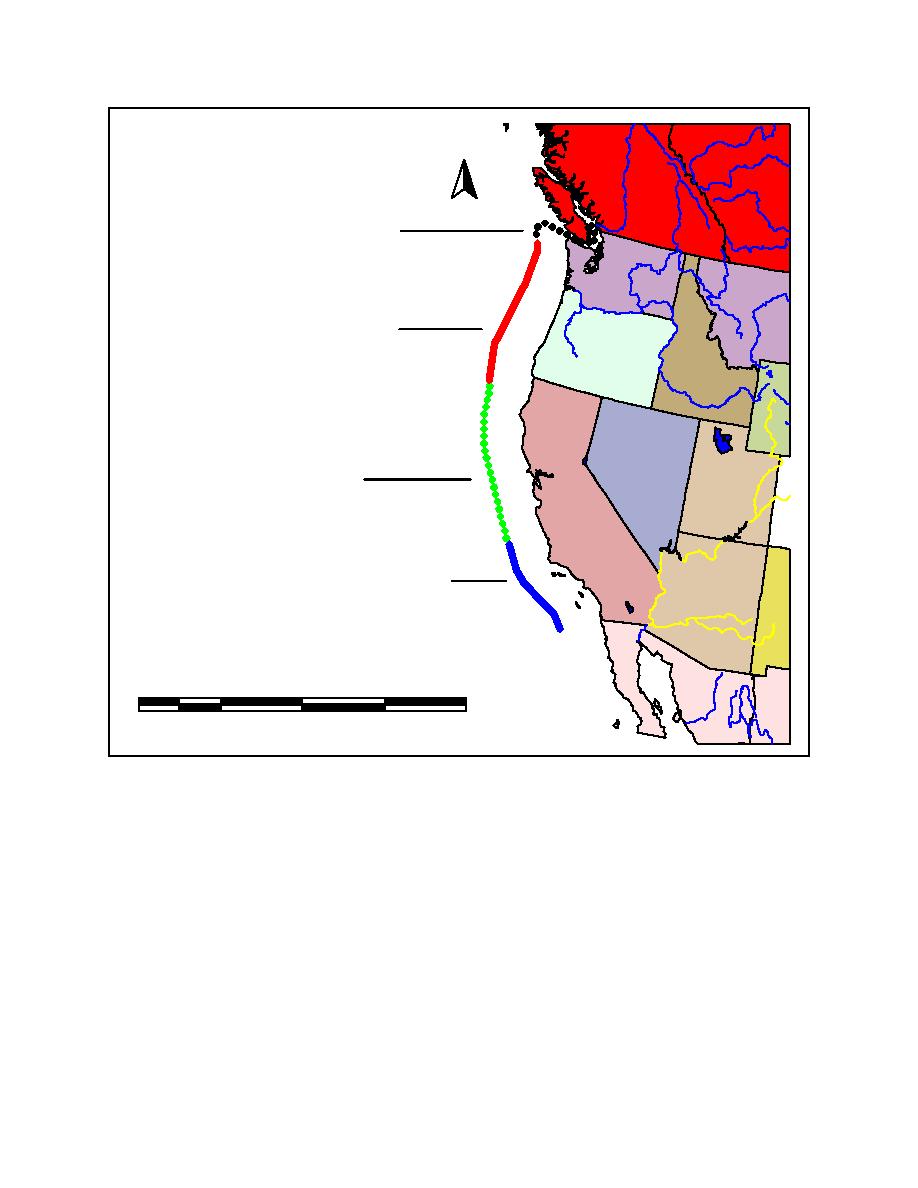
EM 1110-2-1100 (Part I)
30 Apr 02
N
PACIFIC OCEAN
CANADA
Glacially-modified, gravel pocket
beaches, till bluffs.
Puget Sound sheltered from
-Seattle
ocean waves, ice-free
Washington
Sea cliffs, sand spits, pocket beaches,
Colum
bia
exposed to high wave energy.
R.
One major river: Columbia
Oregon
Rugged, high cliffs, sand-
deficient shores.
-San Francisco
Largest estuary complex:
San Francisco Bay
California
Unstable sea cliffs, sand beaches,
offshore island provide some sheltering
400
0
400
800
1200 Kilometers
MEXICO
Figure I-2-13. Pacific coastal characteristics
I-2-3. Stability
Not all shores are in equilibrium with the present littoral processes. Shores with a character inherited from
previous non-littoral processes (i.e., glacial or river deposited materials) maybe doomed to significant rates
of erosion under present conditions, such as the Mississippi delta of Louisiana and portions of the
Great Lakes. Some shores exhibit short-term seasonal or episodic event-driven cyclic patterns of erosion and
accretion (e.g., the southern U.S. Atlantic coast). Other shores demonstrate long-term stability due to
balanced sediment supply and little relative sea level rise influence, such as the west coast of Florida. For
some shores, very little beach-building material is available, and what little is available may be prone to rapid
transport, either alongshore or offshore (e.g., the Great Lakes). Shores that have been heavily modified by
man's activities usually require a continuing commitment to retain the status quo. Prime examples are
New Jersey, which was extensively modified during the 20th century and is now undergoing several major
I-2-14
Coastal Diversity


 Previous Page
Previous Page
